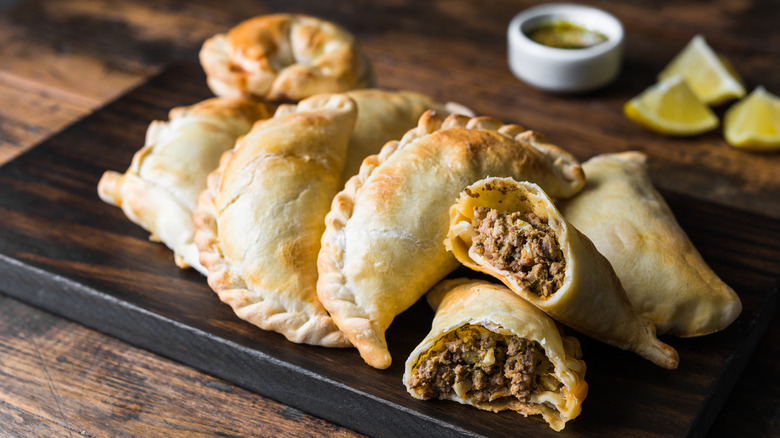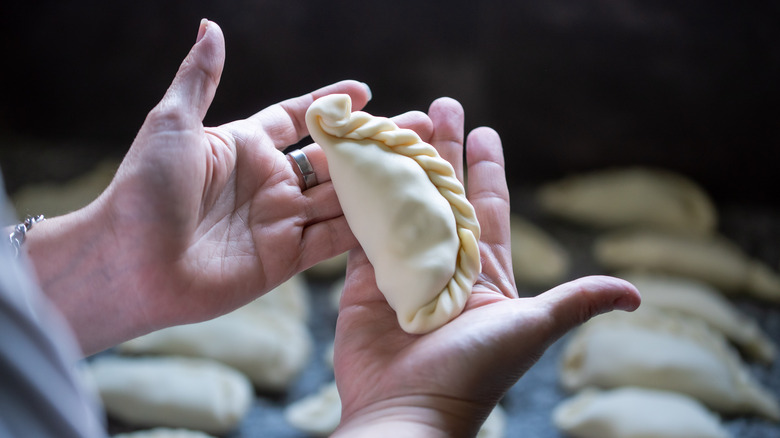The Migratory History Of The Empanada
Empanadas belong to a vast and formidable family of foods: the hand pie. Virtually every culture has its own iteration. Scotland loves its bridies, packed with minced steak and onions, Jamaica feasts on beef patties in turmeric-colored dough, and India's glorious samosas have stolen hearts around the globe (via The World's Kitchen). If you want a big-picture view, hand pies could be included in the even larger food family: stuffed dough. From gyoza to calzones, we all have our favorite flavor parcels, and as it turns out, many of them are linked by a common thread.
The empanada is a perfect example. For starters, empanada means wrapped in bread, per Serious Eats. Today, we associate them with Latin America, particularly Argentina, where every province in the nation has a unique variety, according to Culture Trip. Some restaurants in Buenos Aires are solely dedicated to empanadas and feature a vast variety of fillings, sometimes wrapped in different shapes to distinguish each kind. Empanadas are intrinsically linked to many Central and South American cultures, but if you want to trace their origins, you'll need to take a long journey to another continent and a long-ago era.
The empanada's transatlantic journey
The story of the empanada begins in the Middle East. A Times Union retrospective on the empanada's history traces its roots to Arabic meat pies called sfeehas, which remain a popular feature of Lebanese cuisine. It is widely believed that Moors (a bygone term for Muslim immigrants in Europe) introduced sfeehas to Spain. The exact timeline is uncertain, but the first record of the word empanada can be found in a Spanish cookbook published in 1520. In 1609, the Moors were expelled from Spain, but their legacy could still be felt in the cuisine. Serious Eats notes that empanadas in their original form were much larger. In the Galician region of northern Spain, empanadas are full-sized pies cut into slices.
The Spanish invasion of the Americas introduced empanadas to the western hemisphere where they ultimately shrunk to their modern size. Serious Eats notes that the concept of what an empanada could be changed from region to region, based on the local climate and culture. In Argentina, where cattle are prominent, beef fat was incorporated into the pastry. Meanwhile, in the Caribbean, native yuca and plantains were adopted as the dough's primary starch. Today, it's hard to define exactly what an empanada is because it has evolved and adapted so many times along its globetrotting journey.

